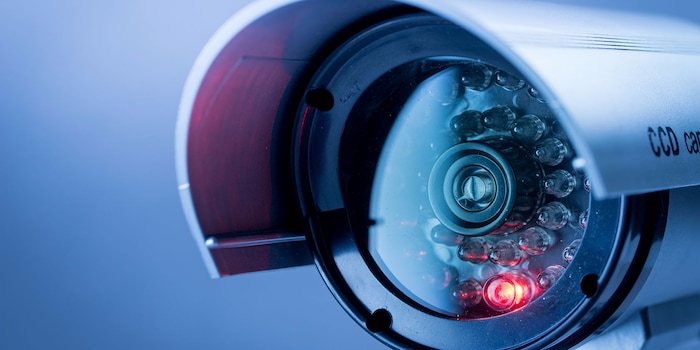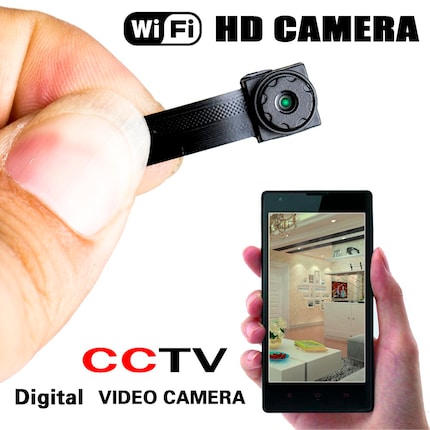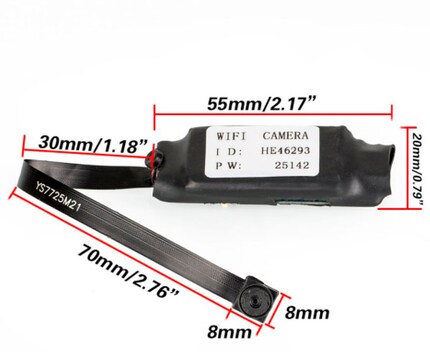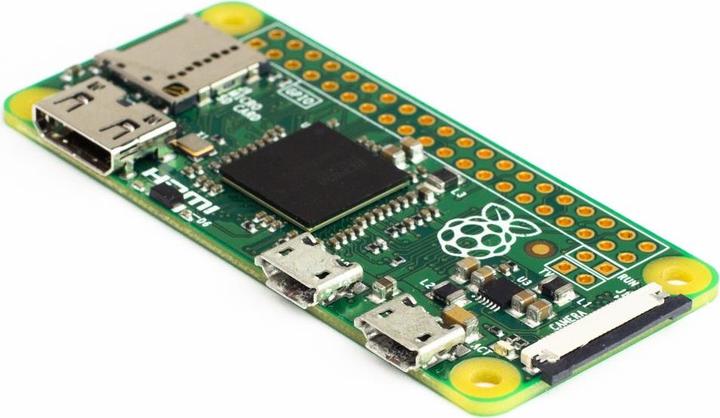

"Help, I'm being monitored by my stalker!": Oh, you don't say...
Big drama. A colleague claims that her new boyfriend is being monitored by her crazy ex with a camera in their shared room. There's only one thing to do: I have to investigate. Because obviously nobody thinks to call the police, which would be the only right thing to do in this case.
"I'm sure my new boyfriend is being spied on by his crazy ex on camera," says a friend who doesn't want to be named for obvious reasons. In the age of digital everything and the Internet of Things, surveillance is a constant worry and suspicion is quickly aroused in crisis situations: Someone, somewhere has hidden a camera and is now spying on your ex, your loved one or your boss.
My reaction is the same as I give to anyone who firmly claims that they are being hacked by their neighbour.
"I'm pretty sure your new boyfriend isn't being spied on by his crazy ex on camera"
"Yes, but I have a really bad feeling about that!"
"Not me," I reply far more flippantly than I intended.
"Can you check?" she asks. She hasn't yet told me whether her beau shares her suspicions. Seems irrelevant too.
That's why I took a look at the phenomenon of the camera in the bedroom after realising that there probably wasn't actually a camera there. Who would have thought that?
The following advice is important in a situation like this: Don't ask your hacker friend. Inform the police. Illegal surveillance of a private space by a third party is, as the term suggests, illegal and therefore a criminal offence.
The social aspect
Before we go all detective and everything, a note: I have changed the names, genders, professions and place names to protect those involved. Privacy is important.
I start the investigation like any reasonable investigation into surveillance and hacking. The key question comes first:
"What does the crazy ex do for a living," I ask. It usually helps if you know who is hiding something when you need to track it down.
"Something to do with social pedagogy. With children. Isn't that bad? They let them loose on children!"

This almost answers the question itself. After all, it takes significant technological knowledge to successfully carry out such an eavesdropping attack. The fact is that most people are not able to maintain a PC properly. So how are they supposed to carry out a fairly complex and illegal operation with any degree of intelligence?
"How is the camera supposed to have got there?"
"My boyfriend's flatmate let the ex into the room and she went on a rampage. All the clothes are dirty and lying around."
Shame about the laundry. But the situation that is said to have happened goes something like this: While a socialite was trashing the loved one's room, she also installed a camera so well that it withstood the ex's fury and is now untraceable in the hustle and bustle of cleaning up. If you're going to install a camera, then it's sensible that no one knows you were there.
So a crazy social pedagogue has installed a camera somewhere during a one-woman act of vandalism.
"Aha. There's no camera," I say.
"Please, please have a look," I'm asked. All right, then.
An analysis of the threat often leads to the desired answer, but rarely does anyone believe it. And that's a good thing, because in this office alone we have lateral entrants who have knowledge somewhere in the back of their minds that has nothing to do with their profession. For example, we have someone on the digitec editorial team who writes articles full-time but studied electronics. Even if he is a keyboard warrior, he would have the ability to install a camera.
Furthermore, such camera kits can be ordered ready-made online. Switch it on, hide it and you're done. That's why I set out to investigate the whole thing technologically, at least superficially.
The technological side
Assuming the crazy social pedagogue actually had the technological knowledge to set up such a camera and then also installed such a camera in the friend's room, the device would also be quite easy to detect.
Most modern spy cameras are much bigger than you think. The internet is full of pictures like this one.

The camera is about the size of a fingernail
The model pictured is available on eBay for about 18 US dollars.
Not shown is the battery and the antenna that transmits the data to the receiver. The construction looks like this.

Slightly larger
The camera has one feature in particular that makes it interesting: wireless data transmission. The crazy ex could therefore enter the loved one's room once, hide the camera there and then wait until the battery is empty. She would never have to come and collect the camera again to view the data, as it is transferred wirelessly to a device of her choice.
- In P2P mode of this camera model, the transmission distance is about 10-20 metres according to the seller
- In network mode, the distance is irrelevant thanks to the internet
The network connection is not included in the lump on the camera. This must be purchased separately. Netgear devices can be used for this. Or a Raspberry Pi Zero configured as a wireless access point.
This makes the small, inconspicuous surveillance camera thing a cable tangle and every spy's nightmare. It is extremely difficult to hide the whole apparatus inconspicuously, especially if a room has to be vandalised as well.
Furthermore, the camera has a battery life of around 45 minutes and can somehow - the manufacturer is not entirely clear about this - be extended to 24 hours. This at a resolution of 640x480 pixels.
So if you need an endless power supply for a surveillance operation, you either have to plug the camera into a socket or tear open the wall, install the camera directly into the active circuit in the home, then close the wall again so that nobody notices anything.
Are there better models? Probably. But the power supply will still be the problem. But let's assume that the social pedagogue can somehow get round the electricity obstacle. I can tell by looking at my colleague that she's still convinced that the lunatic has somehow installed a camera. NSA style, you know.
All right, let's continue to assume that the ex has the ability to install a camera and has somehow bypassed the battery problem. This is where the devastation could play into her hands. After all, if the room has already been destroyed, any cables are unlikely to be noticed. Especially if my colleague's new boyfriend is not technologically savvy himself. Has the ex done a target analysis? Is the trashing just a diversionary manoeuvre? There's only one way to find out.
How to find a camera
This is where it gets exciting. A camera leaves behind not only physical traces, but also virtual ones. This is because wireless data transmission is not quite as covert as is often assumed. There are two methods that the majority of cameras use:
- The camera sets up its own wireless access point
- The camera connects to an existing network
The first method is the most efficient if you want to install the camera quickly. Again with the power obstacle, installation takes a maximum of two minutes. Switch on the camera, enter the home, set up the camera and leave. If the target environment has been well clarified in advance, this can be done within 30 seconds.
But as the camera sets up its own wireless access point, it is visible to any WLAN-enabled device without any further configuration. The developers of the Siimee Eye sex toy made this mistake, which made their camera software, which is based on drone software, accessible to everyone.
The solution here is simple: just have a quick look at which wireless access points are buzzing around. If there's one that sounds suspicious, it could be a camera. But it could also be something else. For example, a new neighbour or the dildo of the student next door.
The second method - the camera is connected to the home network - is more difficult to detect. But only according to Bitzli. The obstacles with this setup start even before the camera is installed. At the very least, the crazy ex needs to know the Wi-Fi password.
Displaying the network devices under Windows
- Open a Windows Explorer window
- Click on "Network"
- Switch on Network Discovery. Windows explains this in the dialogue
- Voilà
Display the network devices under macOS
- Download the IP scanner
- Run the IP scanner
- Voilà
Only devices that you know should appear in your own network. They can usually be recognised by their ID. My Samsung Note 8 identifies itself as SM-N950F, which is not so clear. But if I want to know exactly which device has which ID, then I can just quickly disconnect the Wi-Fi connection, run the scan again and see which device has disappeared. Or simply google SM-N950F.
Is there a device that somehow won't disappear and that you don't know? Change your Wi-Fi password. This is because the device is then no longer authorised on the network and can continue filming data for a hundred years. The device can no longer establish a connection and therefore can no longer send recordings from the home as it no longer has the authorisation to talk to the network.
The social pedagogue may be wrong, but she hasn't set up a camera. I haven't really gone into any technological depth here because after answering the first question about the ex's profession, the matter has actually already been clarified. But the argument "I once saw this in a film" or "I once saw a video on YouTube" often outweighs the knowledge of those who are familiar with the matter. What's more, after a few personal horror stories about the ex, I've built up an image in my head that now resembles a Bond supervillain. No matter how unrealistic that is.
But what if SIM?
Surveillance cameras can also be equipped with SIM cards that transfer data via the 4G network. Prepaid SIMs, also known as burner SIMs, are best suited for this. These are cards that you get without a contract and have a fixed expiry date. Such cards are not available in Switzerland. But this is handled differently from country to country.
Some examples that are currently (October 2017) correct:
- In Ireland, you can buy them from a vending machine at the airport, similar to a Selecta machine.
- In Spain, such cards can easily be bought in any Vodafone shop.
- In Germany you need a contract.
Assuming the ex, who is some kind of criminal genius, has opted for SIM data transfer, I must somehow be able to tell that something with the functionality of a smartphone is transmitting from the room. A SIM card generates an electromagnetic field.
There are countless apps in the Android and iOS app stores that claim to be able to detect cameras. Some of them are complete nonsense, others are not. If your phone has a magnetic sensor, you can use the Hidden Camera Detector to search for the camera's electromagnetic field. Or for pipes in the wall. The thing detects a lot. A quick test in the editorial team shows that the app actually detects electronic devices from a distance of a few centimetres. The app also makes a lot of noise, which I can't switch off.
I haven't tested this now, as the improbability here is astronomically high. Because this scenario is really extremely absurd: the ex has travelled to Ireland to get a SIM card without a contract, has the ability to configure a camera so that it doesn't have the power problem and sends data via 4G, has trashed a room and then left.
So, the ex has travelled to Ireland to get a SIM card without a contract, has the ability to configure a camera so that it doesn't have the power problem and sends data via 4G, has trashed a room and then left.
So, let's recap
- Most people can't install a surveillance camera
- The camera either has to be connected to the mains or only has a few hours of battery life
- Data transmission is easy to find
- Defence against such a camera is also simple
There is no camera. That's it
.
Journalist. Author. Hacker. A storyteller searching for boundaries, secrets and taboos – putting the world to paper. Not because I can but because I can’t not.
Interesting facts about products, behind-the-scenes looks at manufacturers and deep-dives on interesting people.
Show all

